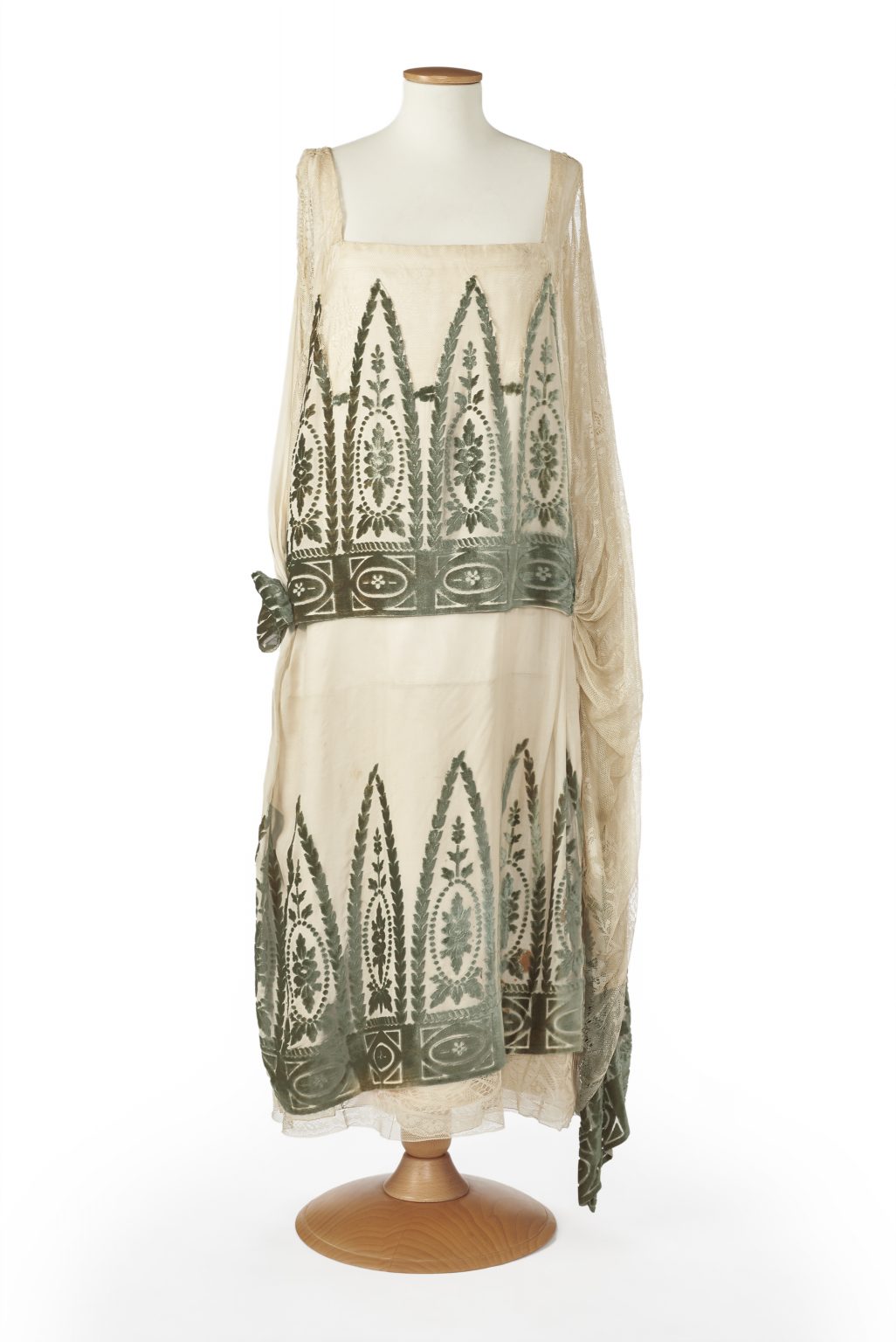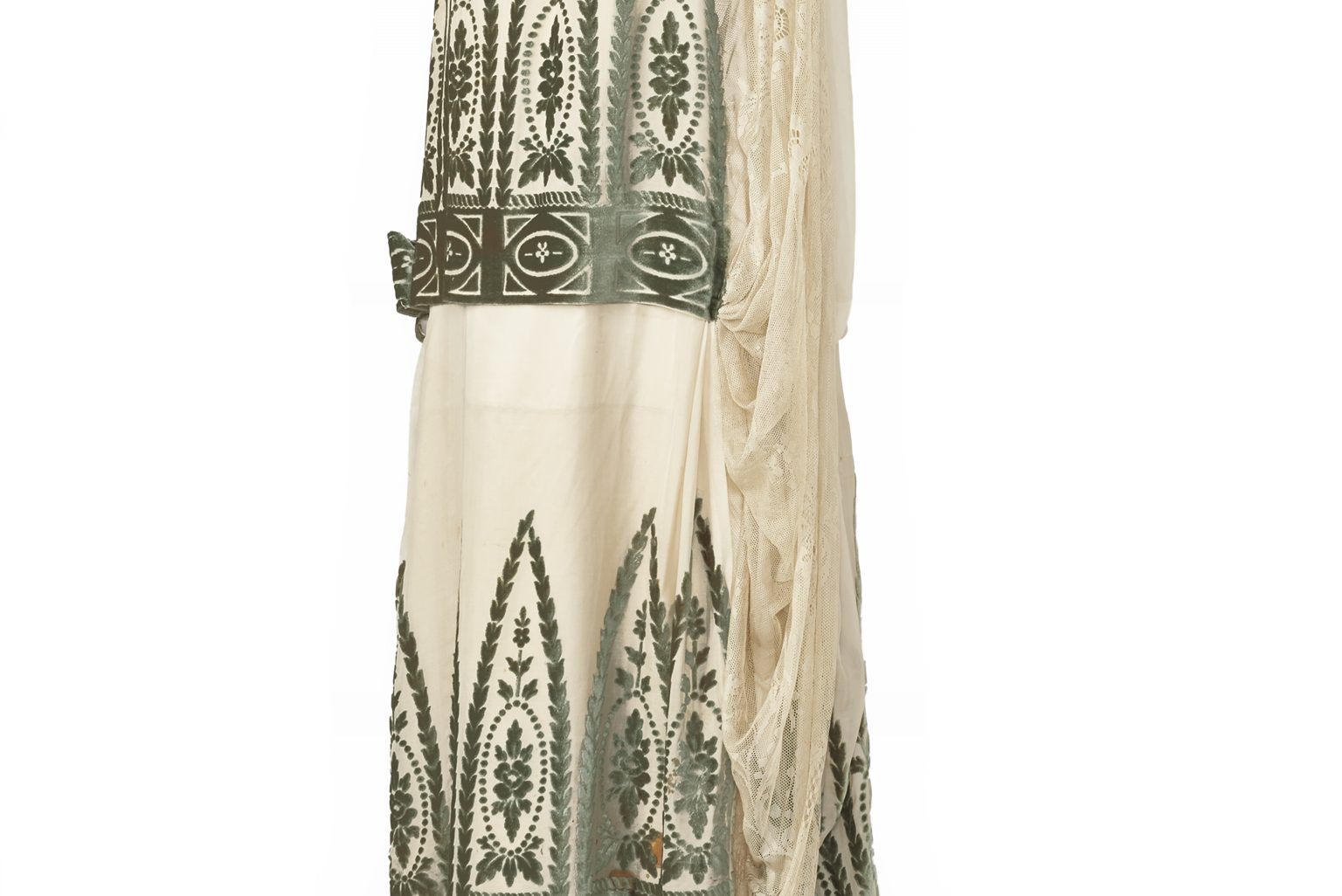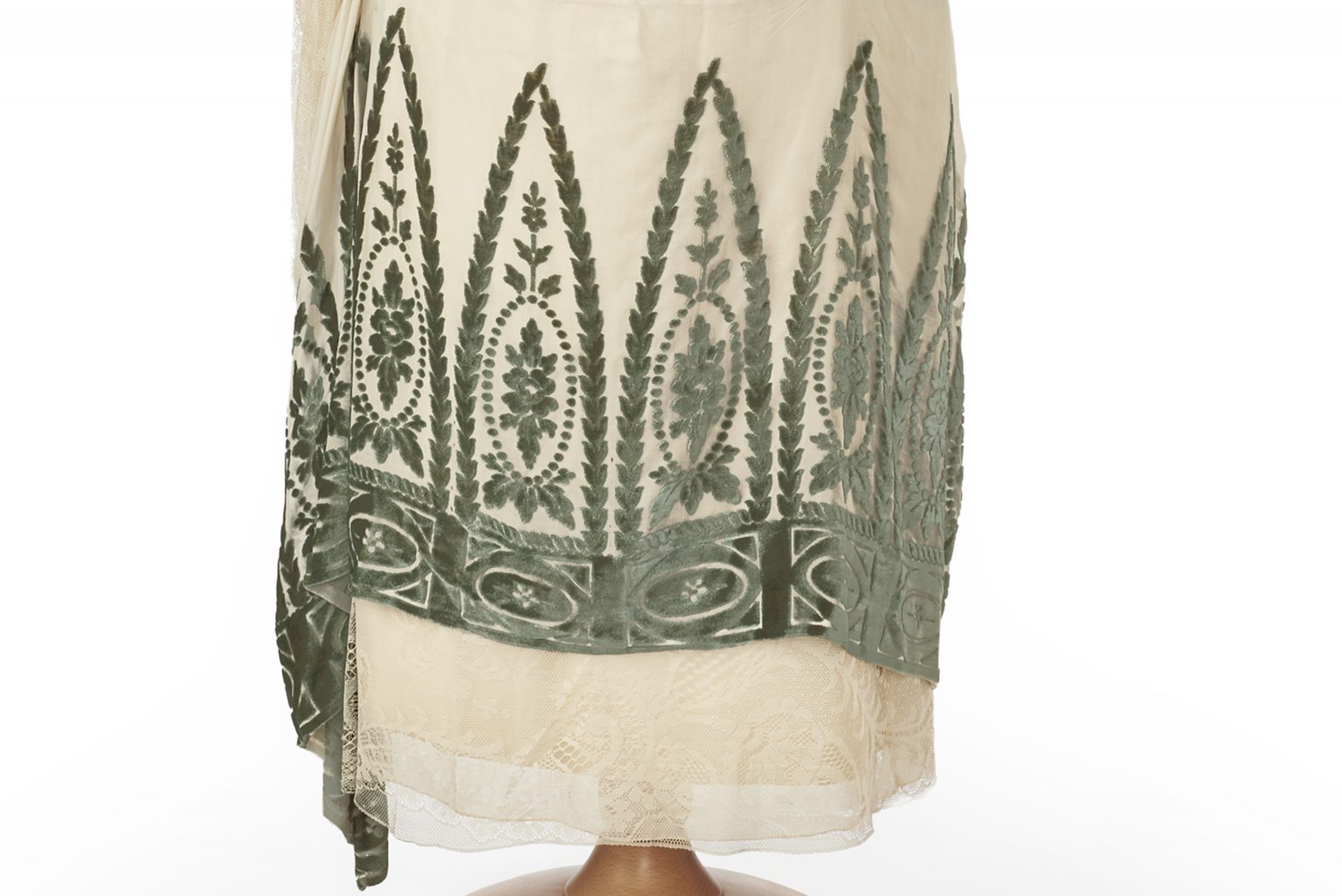
Dress , 1922-25 ca.
Drop-waisted evening dress in cream silk satin with appliqué panels in lace and olive green devoré velvet, c.1922-25, Camilla Colombo Collection
Details


Fashion
This is a period of transition in women's clothing. The shared desire for a return to normality after the war was also reflected in clothing and many fashion houses reproposed the fashion styles from the years immediately preceding the outbreak of the war. Skirts were once again lengthened to the ankles and clothes were once again made from precious materials and embellishments. This return to the past, however, had to be reconciled with women’s desire to retain the freedom they had gained during the war years, including freedom of dress. Women were unwilling to give up the more practical clothes they had worn which had given them greater freedom of movement and they demanded a new fashion suited to the new role they had savoured and wanted to maintain. This dualism led to a style of clothes that appeared soft and loose in shape, but which still concealed a complex structure, made up of several layers and multiple fastenings with numerous
press studs. It was a short-lived fashion that was swiftly swept away by the Roaring Twenties.